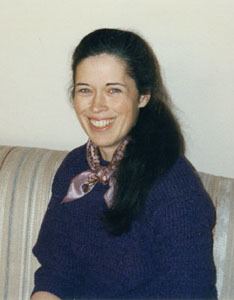Name Margaret Frazer Role Novelist | Died February 4, 2013 | |
 | ||
Nominations Edgar Award for Best Paperback Original Books Crewel World, The Novice's Tale, Unraveled sleeve, A murderous yarn, Framed in Lace | ||
The murderer s tale margaret frazer
Margaret Frazer, born Gail Lynn Brown (November 26, 1946 – February 4, 2013), was an American historical novelist, best known for more than twenty historical mystery novels and a variety of short stories. The pen name was originally shared by Frazer and Mary Monica Pulver Kuhfeld in their collaboration on The Novice's Tale, the first of the Sister Frevisse books featuring the Benedictine nun Dame Frevisse. Their collaboration came to an end with The Murderer's Tale, the sixth book in the series. Starting with the Edgar Award-nominated The Prioress' Tale, the Margaret Frazer pen name was used exclusively by Gail Frazer. She also wrote the Player Joliffe mysteries, starring the medieval actor Joliffe.
Contents
Frazer was born and grew up in Kewanee, Illinois. An actress and member of the Society for Creative Anachronism, she lived and worked in Elk River, Minnesota. Frazer died February 4, 2013 from breast cancer, aged 66.
The sempster s tale margaret frazer part 1
Overview
The first six Dame Frevisse mysteries were written as a collaborative effort between Frazer and Mary Monica Pulver Kuhfeld. The rest of the series was written by Gail Frazer alone. Frevisse is a nun at the small, fictional, 15th-century Oxfordshire convent of St. Frideswide's, with its ten (more or less) nuns; the neighboring village of Prior Byfield belongs partly to the priory and partly to Lord Lovell (an historical figure). Six of the novels are set entirely at the priory and/or village; in others Frevisse leaves the convent, either to accompany another nun on some family or convent business or on business of her own. Many of the novels have the quality of "English village" murder mysteries, in which we see at close hand the everyday material life (and the intellectual and spiritual life) of various classes of people and observe the tensions within and between them; but here, the "everyday" is of the 15th century, carefully researched. Some of the later novels are primarily historical novels, in which Frevisse serves as an observer of the well-documented events and characters which brought on the Wars of the Roses, though there is always a murder for her to solve.
Dame Frevisse is related to Geoffrey Chaucer, author of the Canterbury Tales, by her aunt's marriage to Thomas Chaucer. Titles of the Frevisse novels follow the format of Chaucer’s Canterbury Tales, e.g., The Novice's Tale, The Prioress's Tale. There is no relation between Frazer’s title characters and Chaucer’s, even when they have the same role in life (e.g. Chaucer’s Prioress is a dainty, sentimental woman while Frazer’s is an ambitious, domineering one). However, there is the same implication that we are offered a variety of points of view. Each book begins with a chapter or passage focusing on the title character; this is followed by a change to Frevisse’s perspective, which dominates the novel, though we return from time to time to the point of view of the title character. The role of the title character varies from book to book: murderer, victim, a person in power or a victim of others’ power. Seven of the title characters in the Dame Frevisse mysteries have been women.
The novels of the series are set from 1431 to 1452, during the reign of Henry VI of England; they overlap William Shakespeare's Henry VI, part 1 and Henry VI, part 2. They proceed in chronological sequence, and the heroine ages from a thirtyish nun in 1431 through the next twenty years. In the early novels, Frevisse’s uncle (by marriage) Thomas Chaucer, son of the poet, provides a contact point with historical events as he brings news of the world to St. Frideswide’s; at his funeral (The Bishop’s Tale), Frevisse establishes a relationship with her cousin Alice Chaucer, who is, in her third marriage, united to William de la Pole, count/marquis/duke (as the novels progress) of Suffolk, one of the most ambitious men around the king. In the same novel, Frevisse also impresses Bishop Beaufort, one of the most powerful men in the country. Out of these relationships come various missions in which Frevisse must assist Alice, Beaufort, or both in protecting various interests at the royal court. A character who occasionally appears as a visitor is Joliffe, a man with a mysterious past.
Frazer's second set of mysteries, also set in 15th-century England, feature "Joliffe the Player", a spin-off character from the Dame Frevisse series, appearing first in The Servant's Tale and crossing paths with Frevisse again in The Prioress's Tale, The Bastard's Tale, and The Traitor's Tale. The Joliffe series is set in the mid-1430s; thus these novels sometimes feel like "prequels" to his appearances in Dame Frevisse novels set in a later decade.
The first four Joliffe novels present the life of an acting troupe traveling through the English countryside; but we also see Joliffe becoming involved as a spy in the political intrigues leading up to the Wars of the Roses, and A Play of Treachery takes him away from the players to France.
The sixth Joliffe mystery, A Play of Piety, is set in an English hospital where the actors' troup has taken refuge. In this setting, strong personalities contend: women against the men who are supposedly in charge; a female medica or herbalist versus the male physician; and a toxic narcissist against everyone else. Playing the atypical role of a servant to the nursing sisters who run the hospital in open defiance of those who would dominate them, Joliffe solves the mystery.
Margaret Frazer was a Herodotus award winner, two-time Minnesota Book Award nominee, and two-time Edgar award finalist.
